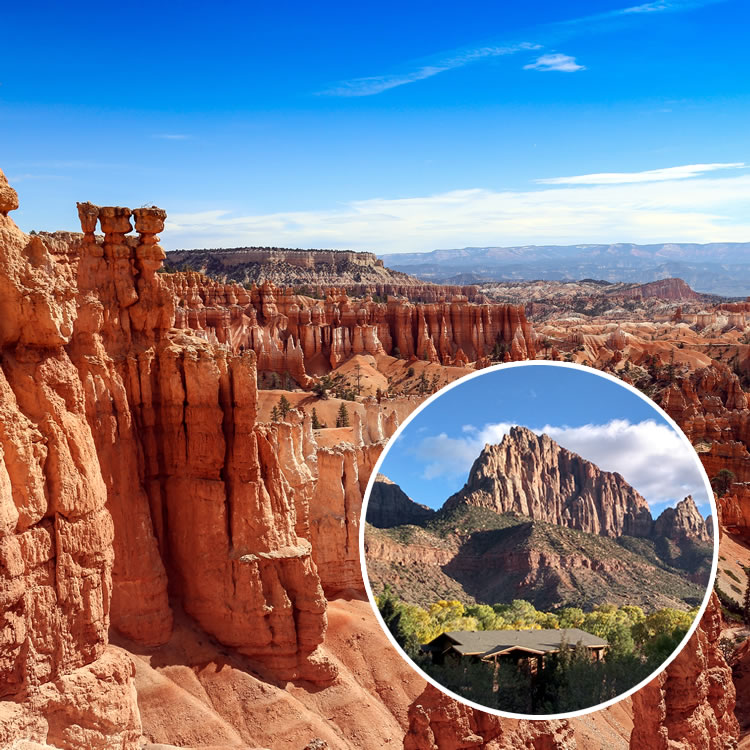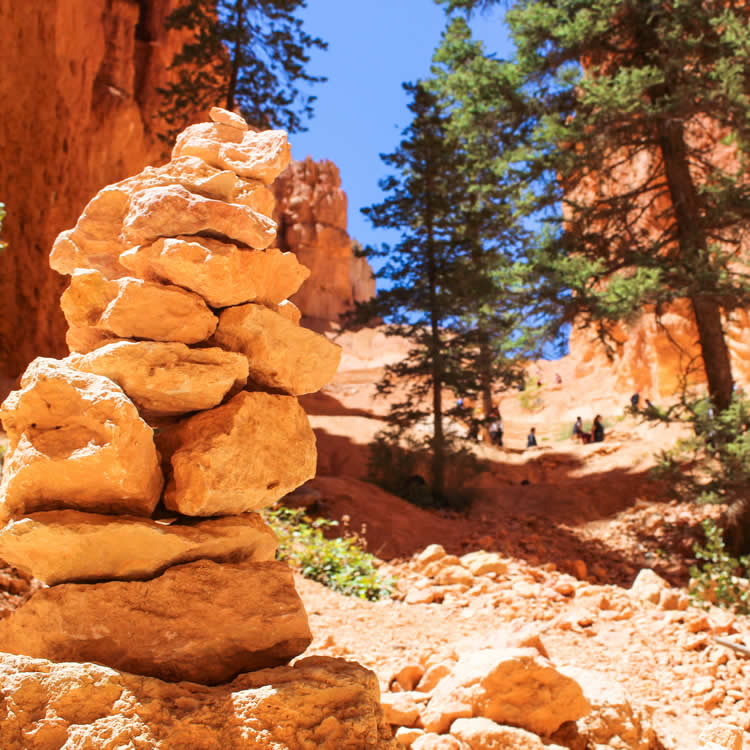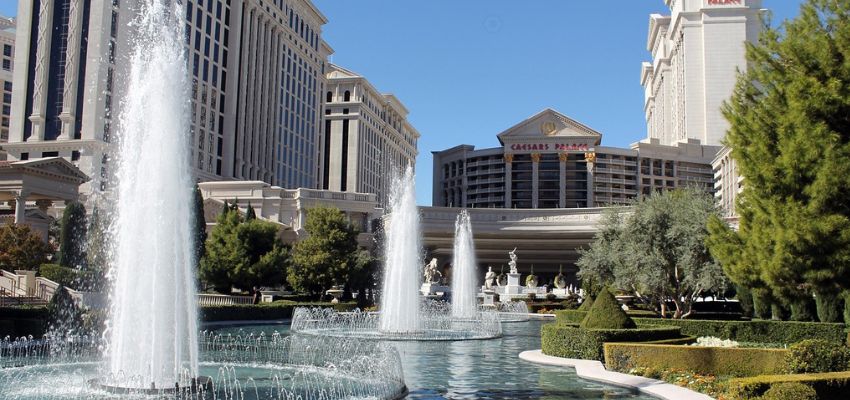When Is The Best Time To Visit Bryce Canyon And Zion National Parks?
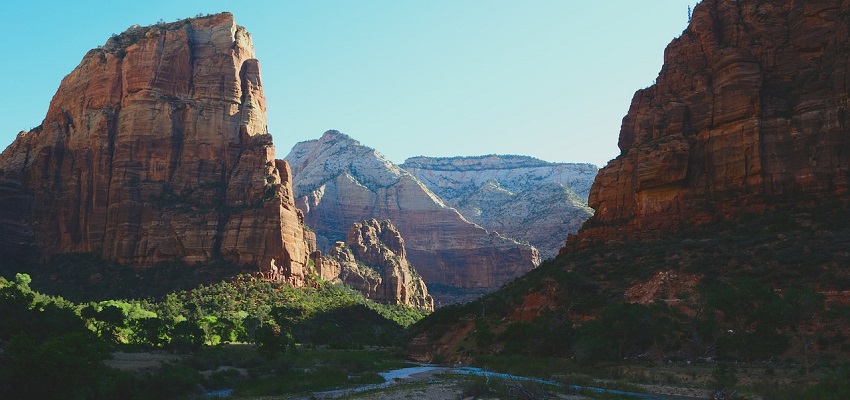
If you’re visiting Las Vegas with hopes of exploring nearby national parks, the Grand Canyon may be the first place that comes to mind.
While we’re all for seeing the Grand Canyon, there are a number of lesser-known but equally splendid national parks to explore that are also within driving distance of Vegas, including Bryce Canyon and Zion National Park—two iconic national parks known for their unique and breathtaking landscapes.
Bryce Canyon and Zion National Park showcase diverse elevation changes and offer visitors distinct (and equally as beautiful) landscapes to explore. And with only about 72 miles separating the parks, you could even visit them both on the same day if you’re feeling adventurous!
Like the Grand Canyon, both Bryce Canyon and Zion National Park are open year-round. If you’ve got one (or both) of these parks on your bucket list but you’re wondering “when is the best time to visit?”, we’ve got you covered. There are advantages and disadvantages to visiting in every season, and our guide will help you choose the best time to visit Bryce Canyon and Zion based on your priorities and interests.
Let’s get started with Bryce Canyon.
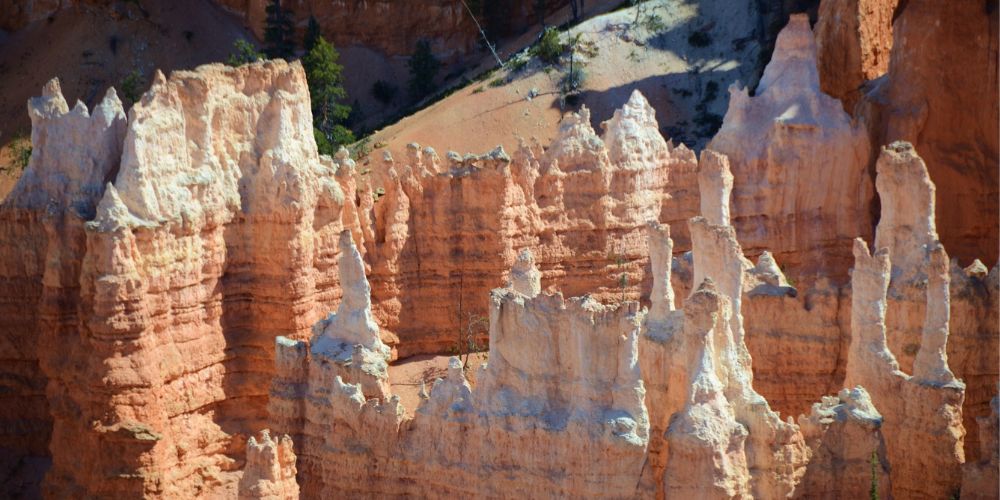
The Best Time To Visit Bryce Canyon National Park
Bryce Canyon is a National Park that doesn’t always get the attention it deserves. It’s home to a landscape that many people don’t realize exists on the planet, and houses the greatest number of hoodoos on earth with 12 hoodoo amphitheaters spread across the park. Some people say it’s even better than the Grand Canyon, which says a lot.
WHAT IS A HOODOO? A hoodoo is a tall, thin spire of rock formed by erosion. At Bryce Canyon, the hoodoos are primarily formed through a process called frost wedging. In the winter when snow melts, the water seeps into cracks in the rock, where it then freezes at night. When it freezes it expands and pries the cracks open bit by bit, allowing more water to seep in during the next freeze-thaw cycle. The hoodoos at Bryce Canyon experience more than 200 freeze-thaw cycles each year, ultimately causing the rock to break apart and form a spire.
If you’re wondering when you should visit, the answer is ultimately up to you and what kind of adventure you’re hoping to have. The best time to visit Bryce Canyon National Park depends on what you’d like to do while you’re there, and your tolerance for variable weather. Whatever your preference, our guide can help you decide.
Spring (March-May)
Similar to other popular tourist destinations, spring and fall are considered the “shoulder seasons”, meaning the crowds are smaller and the temperatures are lower. If you have a flexible schedule and are more interested in sightseeing than hiking, this is arguably the best time to visit.
Advantages
- Mild temperatures in April and May are perfect for hiking Bryce Canyon. Typical daytime highs in these months range between 55°-65°.
- Crowds are smaller, but will start to increase as the peak summer season approaches in May.
- Wildflowers begin to bloom during the spring, adding a beautiful splash of color to the rocky landscape.
Disadvantages
- In March, temperatures are still quite low, with highs around 45°. Snow is also quite common. If you’re planning your visit in March, make sure to dress accordingly.
- Some roads and trails may still be closed due to snow, even into April. You can always check the Bryce Canyon website for updates regarding any closures.
- Muddy trails can be expected in the spring as the snow will begin melting throughout April.
Summer (June-August)
Similar to other popular tourist destinations, spring and fall are considered the “shoulder seasons”, meaning the crowds are smaller and the temperatures are lower. If you have a flexible schedule and are more interested in sightseeing than hiking, this is arguably the best time to visit.
Advantages
- All trails and roads are open for summer, so you won’t be restricted to certain areas of the park while you’re exploring.
- Warm weather and long days are ideal for activities like hiking and horseback riding through Bryce Canyon.
- The bulk of park ranger programs occur in the summer months, including the annual Bryce Canyon Astronomy Festival in June, and the Geology festival in July. You can visit Bryce Canyon’s Ranger Program page for more information on the programs they offer.
Disadvantages
- Summer is the most popular time to visit, making it the busiest and most crowded time of the year at Bryce Canyon. If you are only able to visit in the summer and plan to stay overnight, we recommend booking accommodations for your trip well in advance. You could also opt to stay in nearby Las Vegas (where accommodation is almost always plentiful) and hop on a Bryce Canyon day tour.
- Rainy season is in July and August, with frequent (but brief) afternoon thunderstorms. Always keep an eye on the weather if you’re planning your visit during these months, and be prepared to pull out your rain jacket and find shelter should you get caught in a storm.
- During the day, temperatures can be very high, often reaching 80°-100° in July. Be sure to pack lots of water and take breaks out of the sun as much as possible, especially if you’re hiking.
Fall (September-November)
Like spring, many people deem fall the best time to visit Bryce Canyon because of the cooler temperatures and smaller crowds.
Advantages
- Daytime temperatures are still warm in September with highs around 68°.
- Class is back in session, so you’ll miss the summer vacation crowds, and you can take advantage of end-of-season rates.
- October and November offer cooler temperatures if you’re looking to escape the heat, plus you get to experience the beautiful fall foliage and wildflowers.
- Guided horseback trail rides are available until October 31st, depending on the weather.
Disadvantages
- In October and November, nighttime temperatures often fall below freezing, and you may even experience some snow in October. Make sure to wear layers if you’re visiting overnight during these months.
- Some trails and roads may be closed due to autumn’s unpredictable weather conditions.
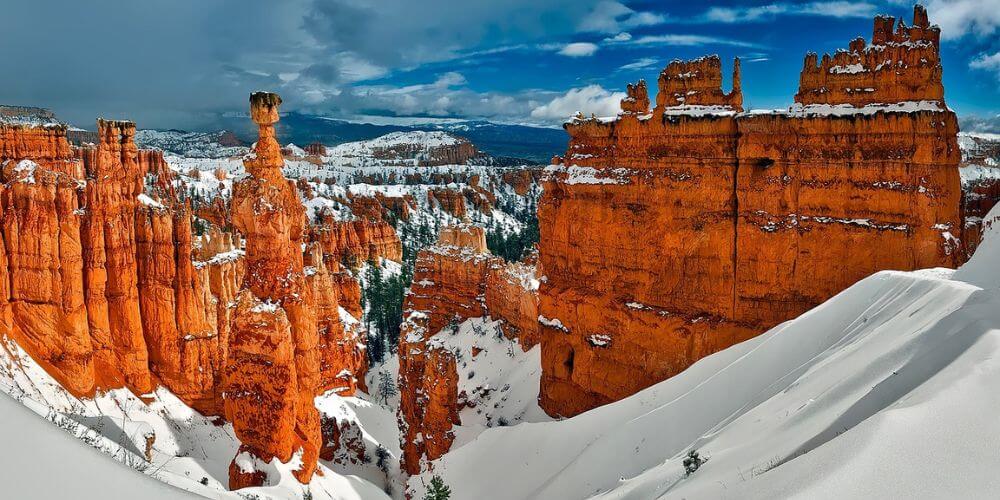
Winter (December-February)
Winter weather often deters travelers from planning their trips in the colder months; however, winter brings many benefits that are hard to ignore.
Advantages
- The crowds are much smaller, which makes it easier to navigate the park. Accommodation prices are also at their lowest.
- Winter activities like snowshoeing, cross-country skiing and hiking are available. You can even sign up for ranger-led snowshoe hikes where the snowshoe rental is free.
- Popular Bryce Canyon events take place, like the Bryce Canyon Winter Festival and the annual Christmas Bird Count—the longest running citizen science survey in the world.
- You get a unique opportunity to see the park and its winter scenery in solitude. Some say Bryce Canyon is even more beautiful in the winter with snow resting on the innumerable hoodoo spires.
Disadvantages
- Because of the high elevation, the weather can be quite variable with snow, rain, and extreme cold all possible. It’s best to check the current conditions right before your visit.
- Some park amenities and facilities are closed (the shuttle, for example) or reduce their operating hours, so make sure to check the park website if you plan on using them.
- Seasonal road and trail closures occur each winter, so you’ll want to avoid these routes. You can find out what’s closed in the winter on their website.
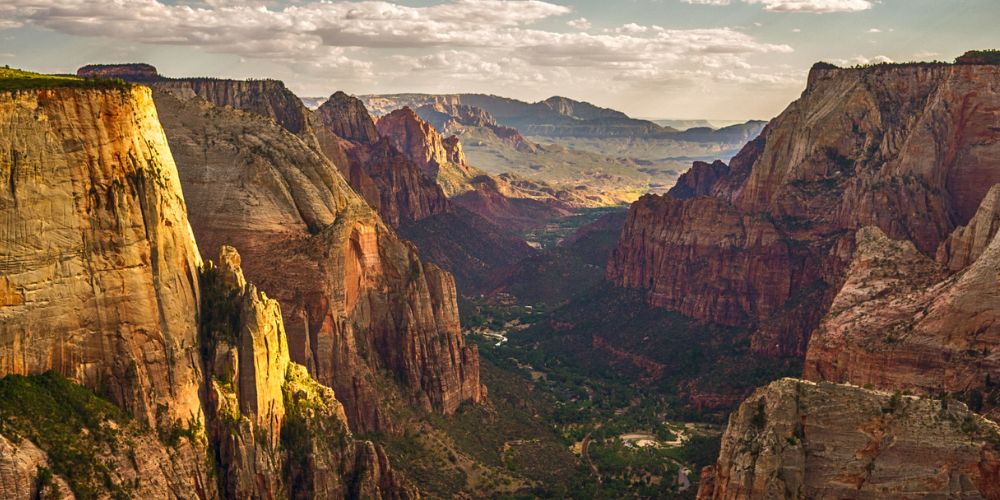
The Best Time To Visit Zion National Park
Despite being just a 90-minute drive apart, Zion and Bryce Canyon have major variations in scenery, temperature, wildlife and vegetation. Zion’s elevation ranges dramatically from 3,700 to 8,700 feet while Bryce Canyon is nestled between 8,000 and 9,000 feet, which means Zion visitors can expect to see a landscape of pastel coloured sandstone layers and a wide range of elevations.
While some of the advantages and disadvantages of visiting Zion during each season resemble those of Bryce Canyon, there are also some unique factors to consider when planning your trip. We’ve outlined everything for you below.
Spring (March-May)
Spring in Zion means melting snow, cooler temperatures, and quieter trails. However, the lower elevation also brings some challenges in the spring that are worth considering.
Advantages
- Many trails will open throughout the season as the snow melts, giving you plenty of options for hiking.
- Moderate spring temperatures allow you to hike longer distances and explore the landscape without extreme heat limiting your plans.
- It’s the ideal time for sightseeing, with smaller crowds and vibrant green scenery, wildflowers, rushing rivers, and waterfalls.
Disadvantages
- Temperatures still drop very low at night and can prevent you from camping comfortably in the park.
- Even though a lot of the trails will be open at the beginning of spring, one of the most famous trails, the Narrows, will likely be closed due to high water levels from snow melt.
- Flash floods are most likely to occur in the spring because of the melting snow on the canyons. Be aware of the warning signs of flash flooding if you plan to visit in the spring.
Summer (May-August)
Summer is the busiest time at Zion, just like most National Parks. Hour-long lines form at park entrances by 10am, so it’s advised you arrive at the park early to avoid the rush.
Advantages
- More time for sightseeing and hiking during the long, sunny days. There are water filling stations at every shuttle stop on the trails, so don’t worry about running out of water during your hikes.
- Zion’s free ranger-led activities are in full swing in the summer. Find out what programs they offer here.
- Witnessing a thunderstorm or flash flood (from a safe distance) descend over Zion’s red cliffs is one of the many spectacular sights of the summer. Monsoon season can have its perks (if you’re prepared).
Disadvantages
- It’s the busiest time of year, which means long lines and more people on the trails.
- It can be very hot, with temperatures often reaching the triple digits. Be mindful of heat exhaustion and stay hydrated if you’re visiting Zion in the summer.
- Afternoon rain showers and flash floods are common during the late summer. Flash flooding is a real safety risk in Zion during monsoon season, so be aware of the warning signs.
Fall (September-November)
Many people enjoy Zion in the fall for its cooler temperatures and stunning display of fall colors. There are many benefits to visiting in the fall, but there are also drawbacks:
Advantages
- Crowds begin to thin, and hiking is more enjoyable. Plus, almost all of the trails are open this time of year so you aren’t limited in your hiking plans.
- Temperatures begin to cool, but are still warm enough to hike the Narrows without the wet or dry suit you would need in the winter.
- Beautiful fall colors start to take over the park starting at the highest elevations.
Disadvantages
- Temperatures can vary by 30°F each day in the fall, which can make it difficult to pack and dress appropriately.
- Shuttle buses run less frequently, and for fewer hours each day, but are still required to get around the park.
- Less daylight to enjoy the park, and less time to spend in the sun. The sun sets early between 5:15-6:30 pm during the fall months.
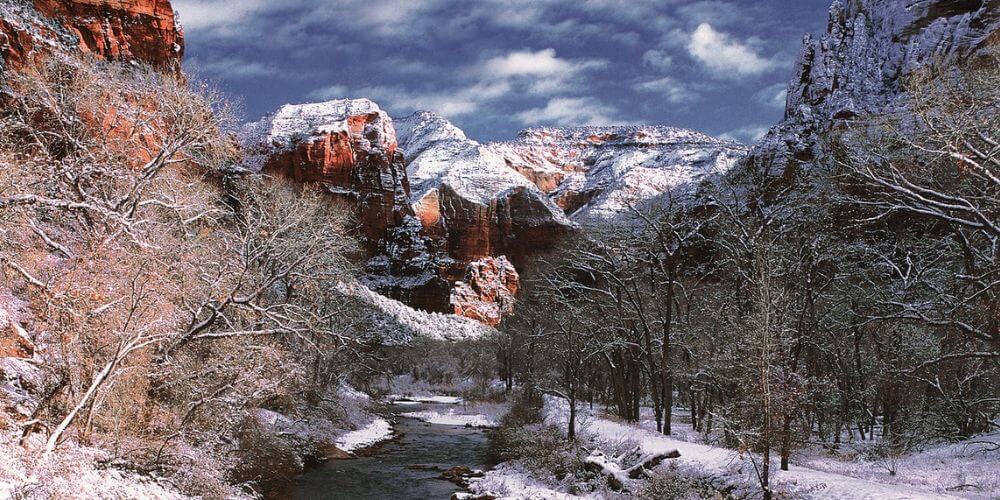
Winter (December-February)
Visiting during the winter months will give you an appreciation for the solitude and beauty of winter in the park—a feeling many travelers don’t get to experience.
Advantages
- Due to its relatively low elevation, the park experiences limited snowfall. So if you’re not a fan of snow, don’t worry, winter weather shouldn’t deter you from visiting Zion.
- You can drive yourself into the park and follow your own schedule. During the other seasons, the only way around Zion is by shuttle bus.
- Better chance to observe the diverse wildlife that inhabit Zion. With fewer tourists crowding the trails, the animals are more likely to roam freely.
Disadvantages
- Many trails will be closed at high elevations due to ice and snow, so you will be more limited in your hiking options.
- Ice is very common in Zion during the winter because the sun melts any snow that has fallen, which then freezes overnight. This can be dangerous if you are not careful on the trails. Be sure to check the trail conditions before hiking in the winter. Traction devices are recommended if you plan on hiking through Zion in the winter.
- Rain is also common during the winter.
Conclusion
Deciding the best time to visit Bryce Canyon National Park, and the best time to visit Zion National Park boils down to your personal preferences:
- Spring offers beautiful wildflowers and milder temperatures, both of which are perfect for hiking and taking in the scenery. It’s part of the shoulder season, so crowds will also be thinner during the spring.
- Summer welcomes bigger crowds during summer break, but also has longer days, warmer weather, and is the ideal time to take part in the free activities the parks offer.
- Fall brings beautiful foliage as the leaves turn in the parks, along with fewer crowds. Temperatures are cooler if you’re looking to escape the heat; however, the nights are very cold.
- Winter enthusiasts will love visiting in the colder months because of the quiet atmosphere, the fun winter activities, and the chance to see the parks coated in snow. However, many trails and amenities close down for the winter.
No matter the time of year you choose for your visit to Bryce Canyon or Zion, expect breathtaking landscapes, unrivaled photo ops, and unforgettable memories.

